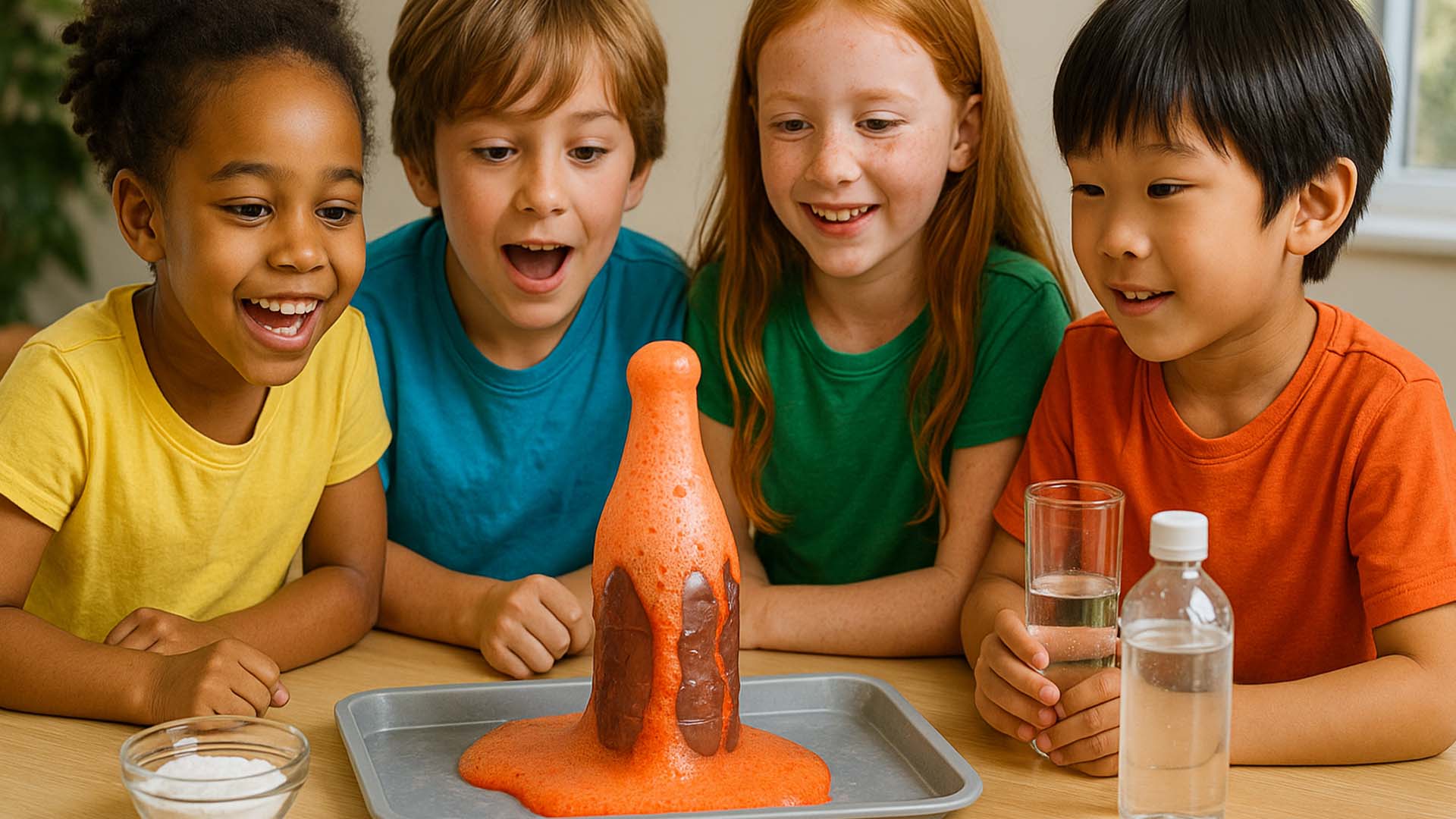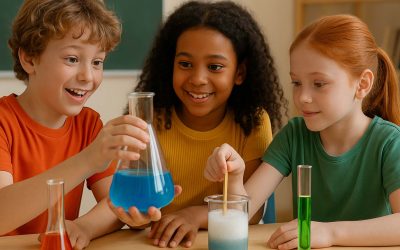Science isn’t just for laboratories and textbooks; it’s all around us, waiting to be discovered! For young children, engaging in simple science experiments is a fantastic way to spark curiosity, develop critical thinking skills, and understand how the world works.
These hands-on activities make learning fun and memorable, turning everyday objects into tools for scientific exploration. This article provides easy, safe, and exciting science experiments that young learners can do at home with minimal supervision, fostering a love for discovery and inquiry.
Discovering Science Through Play
The Magic of Mixtures: Volcano in a Bottle
One of the most classic and exciting science experiments for kids is the baking soda and vinegar volcano. It’s a fantastic way to introduce chemical reactions in a safe and visually engaging manner. All you need is an empty plastic bottle, baking soda, vinegar, dish soap, and a tray to catch the
eruption. Simply mix a few tablespoons of baking soda with a squirt of dish soap in the bottle, then pour in vinegar and watch the foamy lava flow! This demonstrates an acid-base reaction producing carbon dioxide gas [1].
Floating and Sinking: The Egg Experiment
Explore density with a simple egg experiment. You’ll need two glasses of water, an egg, and salt. Place the egg in one glass of plain water – it will sink. Now, add several tablespoons of salt to the second glass of water and stir until dissolved. When you place the egg in the saltwater, it will float! This shows that adding salt increases the density of the water, making it easier for the egg to float [2].
Rainbow in a Jar: Density Layers
Create a beautiful layered rainbow in a jar using liquids of different densities. You’ll need honey, corn syrup, dish soap, water, vegetable oil, and rubbing alcohol, along with food coloring. Carefully pour each liquid into a tall glass, starting with the densest (honey) and moving to the least dense (rubbing alcohol), coloring each layer as you go. The liquids will settle into distinct layers, demonstrating how different densities prevent them from mixing [3].
Homemade Slime: Polymers in Action
Slime is a perennial favorite, and making it at home is a great way to learn about polymers. There are many recipes, but a common one involves white school glue, liquid starch, and water. When mixed, the borate ions in the liquid starch react with the polymer chains in the glue, creating a cross-linked, stretchy substance – slime! This is a fun introduction to the concept of chemical bonds and material properties [4].
Q&A: Your Science Experiment Questions Answered
Q1: Are these experiments safe for young children?
A1: Yes, these experiments are designed to be safe for young learners with adult supervision. Always ensure children do not ingest any materials and wash hands thoroughly after experiments. For younger children, pre-measure ingredients and guide them through each step.
Q2: Where can I find more ideas for simple science experiments?
A2: Many websites and books offer easy science experiments using common household items. Look for resources from educational institutions, children’s museums, or reputable science education blogs. Libraries are also a great source for science experiment books.
Q3: How can I make science even more engaging for my child?
A3: Encourage them to ask questions, make predictions before experiments, and observe carefully. Let them lead the process as much as possible. Connect the experiments to real-world phenomena, and celebrate their discoveries, no matter how small.
Sources
- [1] “75 Easy Science Experiments Using Materials You Already Have Around the House.” We Are Teachers, https://www.weareteachers.com/easy-science-experiments/
- [2] “Top 32 Science Experiments for Kids Using Materials you have at Home.” Kids Science Labs, https://www.kidssciencelabs.com/blog/top-32-easy-science-experiments-for-kids-at-home
- [3] “Home Experiments.” ChildSci.org, https://www.childsci.org/home-experiments
- [4] “45 Easy Science Experiments for Kids.” Good Housekeeping, https://www.goodhousekeeping.com/life/parenting/g32176446/science-experiments-for-kids/








0 Comments